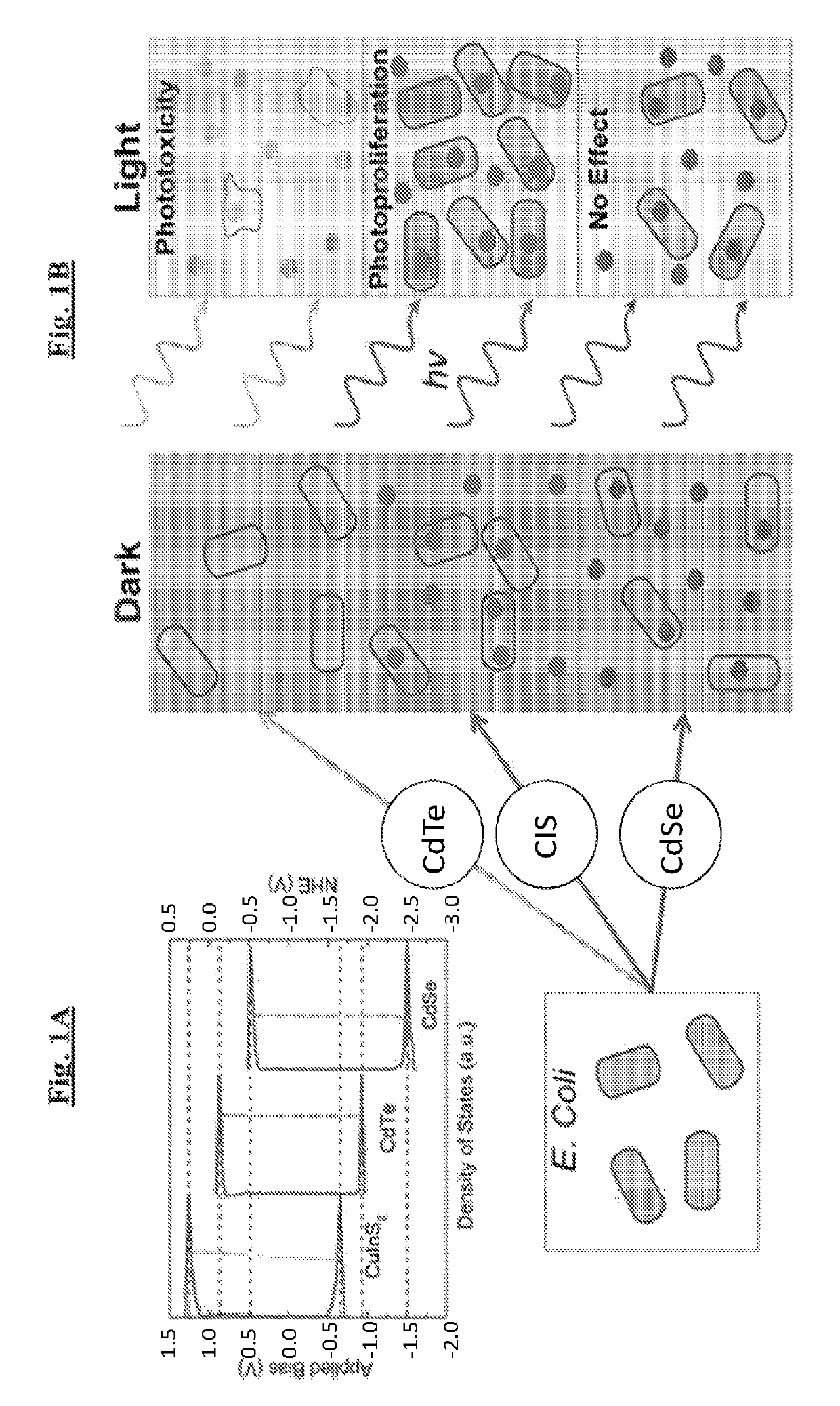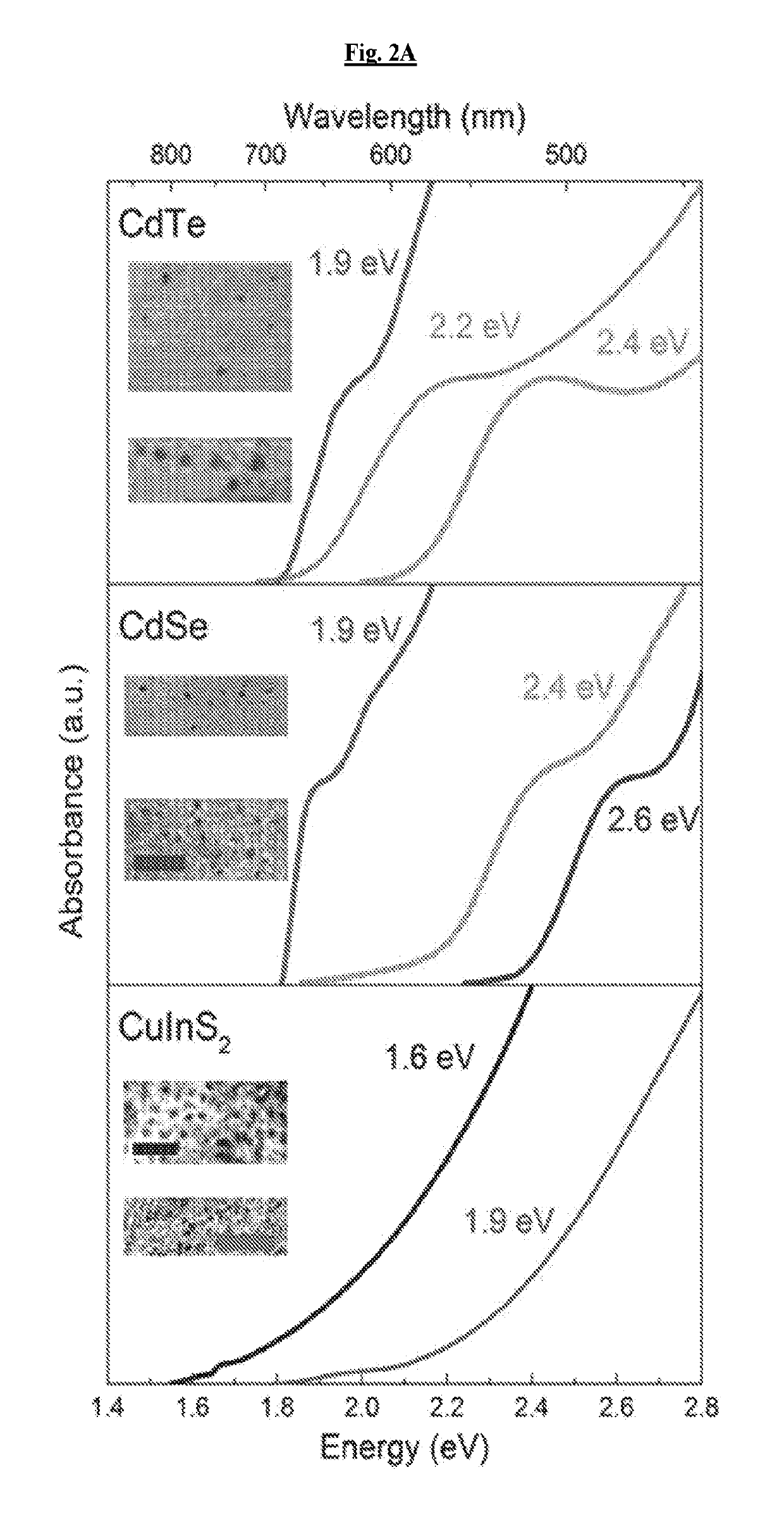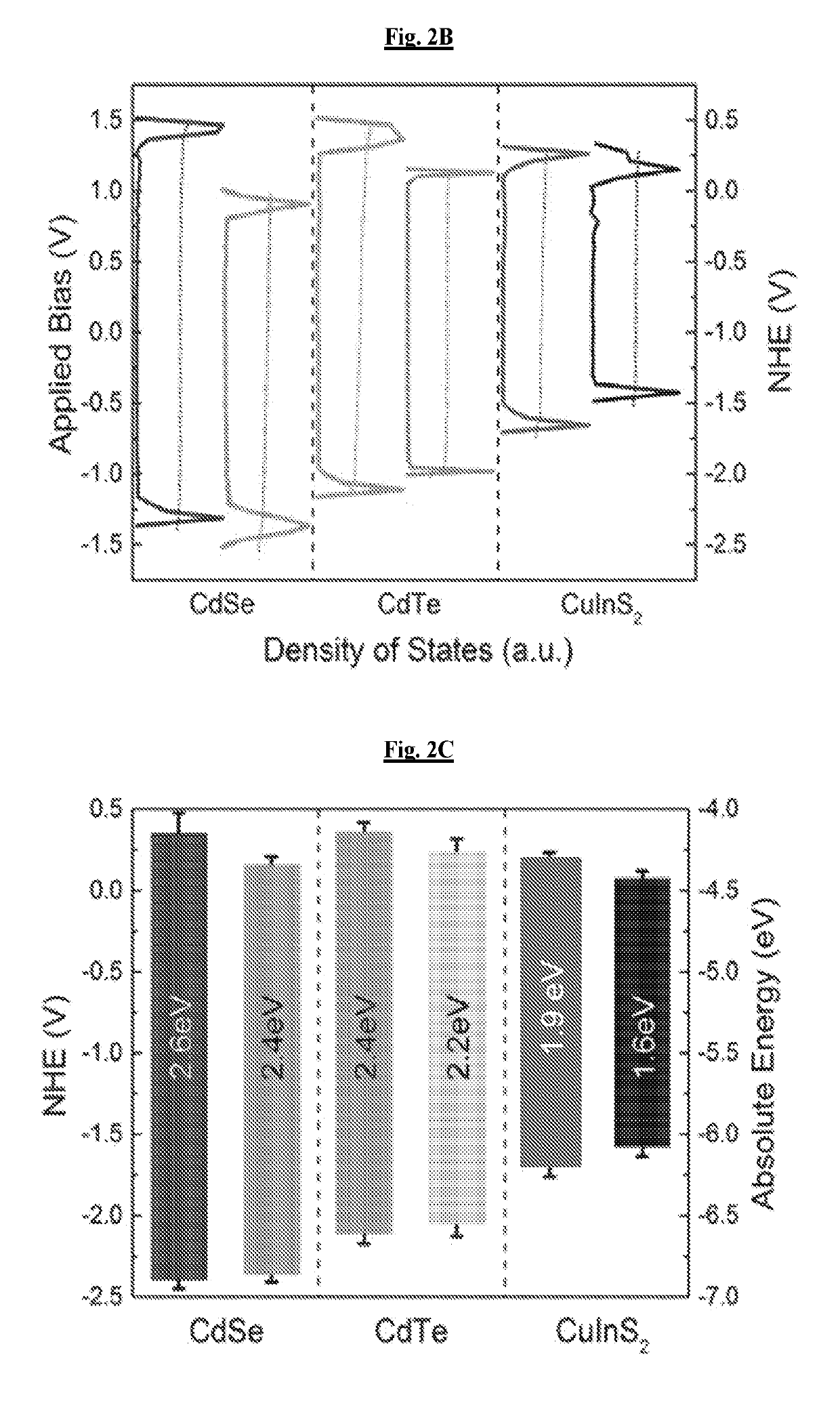Light-activated compositions and methods using the same
a technology of compositions and light, applied in the field of light-activated compositions and methods using the same, can solve the problems of destroying biomolecules such as dna, rna and proteins, inducing cell death by heating the surrounding medium, etc., and achieves the effects of reducing oxidation potential, reducing growth potential, and reducing
- Summary
- Abstract
- Description
- Claims
- Application Information
AI Technical Summary
Benefits of technology
Problems solved by technology
Method used
Image
Examples
example 1
ization of Tunable Quantum Dot Properties
[0125]To examine the range of possible effects, cadmium telluride (CdTe), cadmium selenide (CdSe), and copper indium sulfide (CuInS2, CIS) QDs of different sizes, which absorb light across the visible and near-infrared spectra, were prepared (FIG. 2A). Infrared absorbing dots are highly attractive, as human tissue is generally transparent to light from 750-1000 nm allowing in vivo stimulation.
[0126]Electronic structures of these materials were quantified using scanning tunneling spectroscopy of individual nanocrystals (FIG. 2B). For clarity of comparison to biochemical systems, these measurements are compared relative to the normal hydrogen electrode potential. Based on these measurements, the band edge states of the various materials, which play the largest role in determining the redox potentials of each quantum dot, were identified. Because the samples were not perfectly mono-disperse, there was a distribution in band position for each siz...
example 4
ct of Quantum Dots on Multi-Drug-Resistant Clinical Strains of Bacteria
[0135]After confirming the non-material dependent qualities of quantum dots and their photoeffects in a lab strain of E. coli, the particles were implemented with multi-drug resistant (MDR) clinical isolates (Table 1). CdTe-2.4 showed significant phototoxic effect for three MDR strains of K. pneumoniae (S1, S5, S7), two MDR strains of E. coli (S2, S12), methicillin resistant MDR S. aureus (S4), and MDR S. typhimurium (S10) (FIGS. 5A-5B). CdSe-2.4 was consistent with data in Dh5α and showed no photoeffect in clinical strains (FIGS. 6A-6B). CIS-1.9 showed photoproliferation in two MDR strains of K. pneumoniae (S1, S5), MDR E. coli (S12), MDR P. aeruginosa (S6), and MDR A. baurnannil (S13) (FIGS. 7A-7B). Ag2S-1.7, Cu2S-2.1, and FeS-2.0 shown no significant photoeffect (FIGS. 8A, 8B, 9A, 9B, 10A, 10B).
example 5
Antimicrobial Therapeutic Application and Selective Redox Tuned Cell Death
[0136]In certain embodiments, the phototoxic response observed in CdTe-2.4 allows for its use as a therapeutic agent for combating localized, bacterial infections. In other embodiments, QDs kill or preclude the growth of bacteria while leaving the surrounding host tissue healthy and intact. The present study addresses in part whether selective cell death can be observed due to QDs being tuned to specific organism-dependent cellular redox environments.
[0137]To evaluate antimicrobial potential, co-culture experiments were performed with E. coli and HEK293 cells. HEK293 cultures were grown in tissue culture treated, 96-well plates for 24 hours to obtain 80% confluency, and then inoculated with E. coli and treated with quantum dots for 24 hours. To evaluate cell health, the HEK293 cells were fixed in 4% formaldehyde and dyed with the nuclear stain DAPI and actin stain Phalloidin Cruzfluor 488 conjugate to observe ...
PUM
| Property | Measurement | Unit |
|---|---|---|
| reduction potential | aaaaa | aaaaa |
| reduction potential | aaaaa | aaaaa |
| reduction potential | aaaaa | aaaaa |
Abstract
Description
Claims
Application Information
 Login to View More
Login to View More - R&D
- Intellectual Property
- Life Sciences
- Materials
- Tech Scout
- Unparalleled Data Quality
- Higher Quality Content
- 60% Fewer Hallucinations
Browse by: Latest US Patents, China's latest patents, Technical Efficacy Thesaurus, Application Domain, Technology Topic, Popular Technical Reports.
© 2025 PatSnap. All rights reserved.Legal|Privacy policy|Modern Slavery Act Transparency Statement|Sitemap|About US| Contact US: help@patsnap.com



